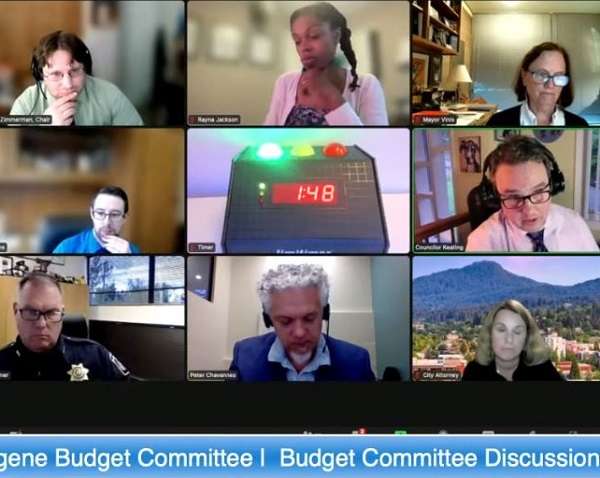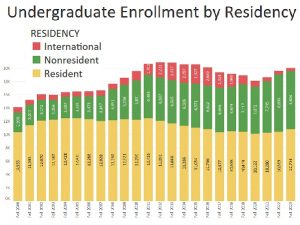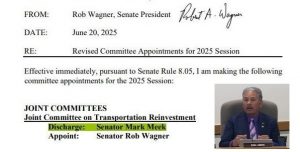Councilor asks to review city spending on homelessness
8 min read
The city’s homeless systems were created mostly with one-time funding. Next year, the city will face another $5 million budget gap. With a quick overview for the Budget Committee May 10, Homeless Systems Policy Manager Peter Chavannes.
[00:00:14] Peter Chavannes: …In 1998 the establishment of the overnight parking program pretty much carried the city’s investment in shelter and services until the Occupy movement, in 2011. Coming out of that movement, the city partnered with social service providers to develop the first alternative shelter locations.
[00:00:37] So in 2012, we saw Opportunity Village emerge; 2013, we had the ‘rest stops’ come onto the scene; and then in 2015, ‘Dusk to Dawn’ arrived: experimental approaches to the growing crisis of homelessness, a number of pilot projects funded with one-time dollars.
[00:00:57] In 2019 with the passage of the Community Safety Payroll Tax / Community Safety Initiative, for the first time, the city had identified a source of ongoing funding for shelter and services.
[00:01:09] Also in 2019, the city and Lane County partnered on the shelter feasibility study (the TAC report), which notably has resulted in the River Avenue Navigation Center, as well as the development of a number of permanent supportive housing units in the ensuing years.
[00:01:28] With the arrival of COVID in 2020, there was a sudden injection of pretty substantial federal dollars coming into our community. First the CARES Act, which the city used in 2020 to expand the rest stop program, and then ARPA, which has financed our safe sleep site development as well as our support of the navigation center.
[00:01:54] When you think about the budget for shelter and services, there are kind of three buckets that are called out. The first one is shelter. and when you look at our sheltering program, our shelter operations cost about $5.8 million annually, $11.6 million over the biennium.
[00:02:14] And it’s important to remind you all that in FY22 and FY23’s adopted budget, the city set aside $11.1 million in one-time funds for safe sleep sites, rest stops and navigation center operations. The intention would be we would run those for as long as the money was there.
[00:02:39] In FY22, our expense to this account was $1.6 million and FY23 was $4.5 million, leaving just about $5 million of that original allocation for FY24.
[00:02:53] As we look at the 23-25 biennium, for shelter services, we have that $5 million one-time carryover. We also have $1.63 million in ongoing funds, primarily flowing through the community safety payroll tax. Those combined leave us with about a $5 million gap beginning in FY25.
[00:03:16] To drill down a little bit deeper around what that means: The city currently supports 696 shelter spaces with direct funding and or the use of city property. The community safety payroll tax finances 262 of those beds: dusk to dawn, overnight parking program, and a small portion of the rest stop program.
[00:03:42] One-time state and federal dollars finance 404 spaces. Those would include our safe sleep sites, the rest stop expansion, and the River Avenue Navigation Center.
[00:03:57] Moving on to the service component of our budget. This is a little simpler. The 2023-25 proposed budget is $1.2 million within the biennium. And that is ongoing funding that’s coming through the community safety payroll tax. So the service funding is really at that basic needs level with the idea that connection point leads to referrals to other more substantial support.
[00:04:28] Moving on to the staffing component of our budget. The 2325 proposed budget includes two additional staff connected to homelessness, the housing and homelessness section manager and then our homeless services analyst.
[00:04:45] Some of you may have heard that Lane County is receiving $15.5 million in state funding, for shelter, rehousing, and prevention. We’re in that process as the city of Eugene has representatives on the Multi-Agency Coordinating group (MAC) that’s making decisions around the use of that money. Decisions haven’t been finalized, and so we’re not clear yet how that money may impact the city’s budget.
[00:05:11] What we do know right now is that we’re looking at a $5 million gap that’s going to kick in an FY25. If we don’t solve for that, we’re going to lose 332 shelter spaces within the biennium and then, We’re anticipating again, if we don’t solve for this gap, an additional 72 spaces in the 25-27 biennium.
[00:05:39] Zach Mulholland (Budget Committee member): Regarding the revenue shortfall of $8 million a year, which it looks like $5 million of that is for shelter space…
[00:05:48] City Manager Sarah Medary: That $8 million doesn’t actually cover the $5 million. That is like a shortfall beyond the shortfall. So our plan was and continues to be, to go to council to help determine the scope of what a revenue team might talk about and the areas of service that a revenue team might talk about.
[00:06:07] Zach Mulholland: Thank you. Good to know that this $5 million shortfall is in addition to the other $8 million shortfall and that it sounds like we don’t have a good idea yet where we might be able to find those revenues.
[00:06:18] In conversations that I’ve had with unhoused individuals, there’s a lot of mental health issues, a lot of trauma. It seems like we need mental health professionals and addiction treatment specialists that can go out and proactively work with homeless individuals to connect them with services and get them into temporary housing, etc.
[00:06:39] What are we doing proactively as opposed to reactively…?
[00:06:44] Peter Chavannes: In our community, Lane County is the primary jurisdiction for service provision. We’ve kind of stepped into homelessness to provide spaces within which people can receive services. So from the homeless services perspective that’s kind of how the city’s investment plays out…
[00:07:08] As we’ve deployed the shelters over the last several years, the city has been paying for what we call ‘operational expenses,’ maintaining the environment within the shelter, helping people get in, trying to make sure that they’re available to service providers who do the mental health, case management, housing navigation.
[00:07:30] My experience with folks working on, say, the public spaces team, for example, you know, it’s heartbreaking what they encounter on a daily basis as they’re trying to maintain public spaces. An individual who’s unhoused and in dire straits in that public space, they for sure are trying to help them, and all of these teams have a list of resources that are present in our community. Whether those resources have the capacity to take the person they’re talking to right then is another matter.
[00:08:04] But I will say that the public space team members are very interested in connecting people to services. There are just not a ton of services available.
[00:08:17] Zach Mulholland: We’re spending roughly $1.225 million per year, connecting 3,000 individuals with basic needs support. What do those basic needs supports look like And then those 3,000 individuals how does that compare to the total houseless population and what overlap is there? Do we know what the average length of stay is of folks that stay at those sites? And then, how successful are we at moving folks into more permanent housing, self-supported housing out of those sites?
[00:08:51] Peter Chavannes: So 4,600 unhoused people in Lane County, 3,600 in Eugene. A significant proportion of those folks are getting services either through the Lindholm Service Center, 15th Night, or our day access resources, mostly happening out of the provider room at community court.
[00:09:13] The kinds of supports that they’re receiving are food, clothing, showers, school supplies. I think those are the main ones.
[00:09:23] What we call positive exits—that might be housing, permanent supported housing, non-supported housing, moving back in with parents, friends, other relatives;.in other words, they’re exiting but not exiting to the street—so about 20%.
[00:09:41] Zach Mulholland: It would be nice if we knew what the city and the county were doing to help people successfully transition out of these sites. How many people are entering the sites and then how long is it taking them while they’re there? And then how many are leaving successfully to a better outcome when they transition out of that site?
[00:09:58] Councilor Mike Clark: 2012 to today, how much do we spend each year on homeless services? From my point of view, that’s the elephant in the room. We spend millions and millions and millions a year now in a policy that has failed because the problem continues to get worse and we need a new approach.
[00:10:20] We are doing this in place of, as Peter said, the appropriate folks who should be addressing this, and that’s the county. I don’t believe we’re putting enough pressure on the county to put enough pressure on the state to do the things that are required for a public health response that is the responsibility of the county.
[00:10:41] We’ve spent an increasing number of millions of dollars a year to the point where we’re now choosing between Greenhill (Humane Society) and how we respond to the homeless problem. And fire stations and our core missions and dealing with this problem effectively, which is most important to the community. I think we need a new approach to how we’re dealing with this. I don’t think an ever expanding number of shelters is going to do the job.
[00:11:10] John Q: Later in the meeting, Councilor Mike Clark.
[00:11:12] Councilor Mike Clark: To what degree and why do we believe it’s the city’s responsibility to supplant the response to homelessness that is the county’s proper responsibility?
[00:11:26] I await the information from our city manager, but I believe that we got a lot of one-time dollars from the federal government during COVID and in other places where we stepped up our response, either because some may not trust the county to do the job they would hope to do, or spend the amount of money they would hope to spend, or we had the opportunity to add to the solution.
[00:11:51] My hope is that we look at that comparatively to our other direct city responsibilities that some of my colleagues have mentioned and say, ‘To what degree is this level of spending appropriate versus some of the cuts we’re debating?’
[00:12:08] If we don’t have that conversation, then I think we’re doing our community a disservice. Because I think, from my point of view, what we’re spending is disproportionate. I personally don’t believe the city has a responsibility to provide shelter for people.
[00:12:25] Now we hear that an awful lot in public testimony, that it’s the city’s job, and I’d like to see us have the discussion. Is it the city’s job to provide shelter for someone who won’t or cannot provide it for themselves?
[00:12:40] And if so, we need to talk about how we balance that in our other priorities on an ongoing basis because we’re spending an ever-increasing amount, I believe, on this issue, as if the answer to the question were a foregone conclusion. And I think we need to have that discussion before we get there.
[00:13:02] John Q: Facing millions in proposed budget cuts, Councilor Clark asks to revisit the city’s role in homeless response.



